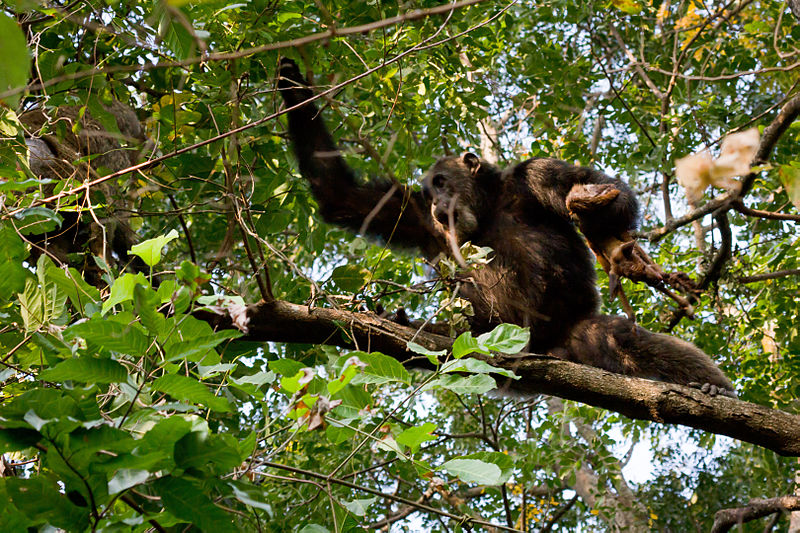Our presence living on the ground (or at least not in trees) is seldom remarked upon in everyday life, but our ancestors spent their lives in the trees. How did our species make the move from the trees to the ground? Following loosely from my last post about learning more
about human bipedalism through the observations of a closely related species, a
new study into the ground nests of chimpanzees has revealed some interesting
possibilities about our ancestors’ move from the trees to the forest floor.

It
is believed that a common ancestor to the chimpanzee and the human nest in
trees some six million years ago. However, this is not recorded in the fossil record
and so the transition from tree-dwelling to ground dwelling is not a well-
explored area. While most chimpanzees nest in the trees of their range, there
is one group of West African chimpanzees in which some members nest on the
ground. This group has not been well-studied, but the current results overturn
some of the long held beliefs about the hominid transition from tree to ground
sleeping.
It was previously believed that the transition from tree to
ground sleeping was a sudden change in evolution. The existence of a group of
chimpanzees that sometimes sleep in trees and sometimes on the ground throws
this theory in a new light, one that may force the theory to change. It points
to a more gradual change to ground dwelling and sleeping individuals. Another
belief about the transition that might be overturned by these chimpanzees is
the reason behind the move to ground.
Previous theories include a shortage of trees driving early hominids to
the ground and a need for fire encouraging the move. The chimpanzees have
neither of these driving forces; they live in an area with ample trees and
never light fires. The move to the
ground by some of the chimpanzees does not seem to be driven by mate guarding
behavior either.
While alternative theories for the move from the trees have not yet been proposed, I am sure they will be interesting.
-Rebecca S.
Source:
Wiley-Blackwell (2012, April 16). Chimpanzee ground nests offer new insight into our ancestors' descent from the trees. ScienceDaily. Retrieved April 15, 2012, from http://www.sciencedaily.com/releases/2012/04/120416113058.htm
Picture:
Ikiwaner. (2010). Adult male Eastern chimpanzee (Pan troglodytes schweinfurthii) snatches a dead bushbuck antelope from a baboon. Retrieved April 17, 2012. From: http://commons.wikimedia.org/wiki/File:Gombe_Stream_NP_Beute.jpg
-Rebecca S.
Source:
Wiley-Blackwell (2012, April 16). Chimpanzee ground nests offer new insight into our ancestors' descent from the trees. ScienceDaily. Retrieved April 15, 2012, from http://www.sciencedaily.com/releases/2012/04/120416113058.htm
Picture:
Ikiwaner. (2010). Adult male Eastern chimpanzee (Pan troglodytes schweinfurthii) snatches a dead bushbuck antelope from a baboon. Retrieved April 17, 2012. From: http://commons.wikimedia.org/wiki/File:Gombe_Stream_NP_Beute.jpg
This is very interesting! I saw in the original article that building nests was "widespread and likely habitual in two communities." I wonder if a prospective study could be conducted to see if this behavior is adopted by more communities over time. This may or may not be very realistic though, since it would likely take many, many years. I also wonder if nesting on the ground has to do with natural predators not being a threat to them on the ground, which may have perhaps existed in the past?
ReplyDelete-Jenny Reyes